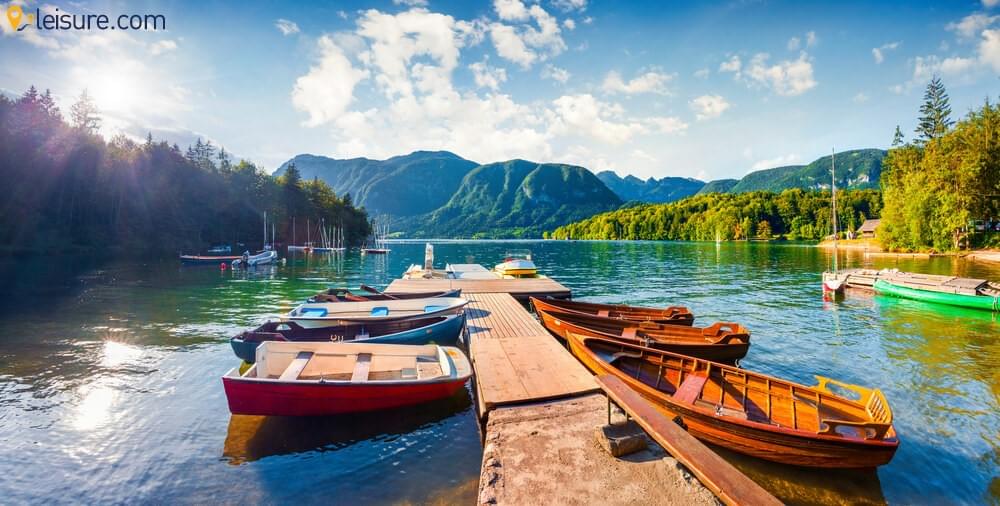Slovenia Travel Guide - Adventure In Eastern Europe








Known as ‘Europe in Miniature’, tiny Slovenia has a large heart and a treasure of diversity. The soaring Julian Alps taking a touch of Switzerland, the shimmering coastline oozes Mediterranean beauty and Bled’s sweet island church appears to have come directly out of a fairytale. This Slovenia travel guide brings the perfect itinerary for all kind of travelers. There is lots of action for adrenaline junkies, from cycling, hiking, and skiing, to canyoning, caving, and boating. For those who prefer a leisurely pace, just relax and immerse in the picturesque views.
Tour Highlights
-
Explore wonderful Split
-
Feel the rich heritage of Zadar
-
Enjoy Croatian food at Pag Island
-
Travel through Plitvice Lakes National Park
-
Explore Slovenian town of Bled
Tour Description
This adventure bounds from the Gothic monuments of Split, through the pristine scenery of Plitvice Lakes National Park and ancient streets of Old Town Zadar, then on to the island of Pag. After leaving the Dalmatian coastline, cross into Slovenia to discover the enchanting surrounds of Bled. The Slovenian town of Bled is a joy to explore. An active paradise, the beautiful town lies on a stunning lake at the edge of the Julian Alps and its island church appears to have come straight out of a fairytale. This Slovenia Travel Guide offers lush forest hikes, breathtaking landscapes, medieval architecture, and scrumptious food along with a good taste of the ancient Croatian and Slovenian culture.
Tour Price
Our private tours typically range from $500 - $1000 per person/per night depending on chosen hotels and room categories, vehicles used, types of tours, flight cost, time of year and other factors. Make an inquiry for a customized trip quote.
Detailed Itinerary
Day 1: Split
Dobro Dosli! Welcome to Croatia. If Dubrovnik is regarded as the heart of Dalmatia, Split is absolutely its soul. Located on a small peninsula on the eastern shores of the Adriatic Sea, it's the second largest city in Croatia. Split developed out from Diocletian's Palace and you can almost view it growing in a multitude of different ways right before your eyes. Some cultures might have turned the palace a museum, but the city of Split has always been a vibrant, lively place and the palace houses many businesses as well as being home to locals. After the group meeting, you may head out for your first taste of Dalmatian cuisine with the tour group.
Your adventure starts with a welcome meeting tonight at 6 pm – check with reception to confirm the time and venue. Keep your insurance details and next of kin information ready for collection by your leader. If you can't board a flight that will reach on time, you may opt to arrive early. As there's not much time in Split on this tour, and so much to view, this is suggested anyway. We’ll be pleased to help you book the hotel, subject to availability.
Day 2: Zadar
Board a local bus to Zadar which will take approximately 3 hours. For centuries Zadar was the capital city of Dalmatia, and the city's rich heritage is noticeable at every corner. Zadar is a significant coastal town, the musical steps of the ‘Sea Organ’ on Zadar's waterfront expose its great relationship with the sea. Trace marble streets through the Old Town and explore Roman ruins amongst medieval churches. Experience some local food and drinks in a city that’s home to the lively cafe culture. Zadarsko Pivo is a light beer with a very refreshing taste, just a little bit bitter, with a heavy flavor. Afterward, you may treat yourself to a gourmet meal at a modern Croatian restaurant. Try lamb in red wine, 'Njoki' with Dalmatian ham and rocket salad, or go for the popular dish of fresh fish: tuna carpaccio or a fillet in a scampi sauce. Also try the popular liqueur, Maraschino, made from locally-grown maraschino cherries which is a centuries' old secret recipe. This unique drink was a favorite at European imperial and royal courts and has been produced in Zadar since 1821.
Day 3: Pag Island / Zadar
Today you may start with a full day journey to Pag Island which is approximately 1 hour from Zadar. The karst island of Pag is home to sheep, and a strong-minded group of islanders who wring themselves a living from the barren, rocky landscape. Established in pre-Roman times, the island has been at the mercy of the shifting destinies of many Dalmatian rulers, and today remains of its wealthy salt-mining past are visible around the island. Explore the old city of Pag, or swim in one of the shallow coves near town that make Pag Island a favorite destination for beach-lovers. Meet a producer of the island's famous Paski sir, Pag cheese. Eaten sliced with black olives or ham, or grated and used instead of Parmesan, Paski sir tastes salty with a rich tangy flavor. This unique cheese comes from Pag Island's sheep, who travel the rocky island eating aromatic herbs and grass on slopes covered in salt deposits by strong sea winds. The milk is obtained in May, left unpasteurized during fermentation, then rubbed with sea salt and olive oil and left to age anywhere from six months to a year. Relish in some of the cheese along with some local wine. This is followed by lunch, which is normally lamb cooked under the bell, with a vegetarian option available also. Once back in Zadar you may visit the renowned modern ‘Greeting to the Sun’ and the more ancient St. Donat`s Church and St. Anastasia’s Cathedral.
Day 4: Plitvice Lakes National Park
Today you will travel towards north to your next base of Grabovac which is approximately 2 hours of driving. Here you’ll explore Plitvice Lakes National Park, a misty paradise of endless waterfalls and spectral blue lakes. Fed by the Bijela and Crna (White and Black) Rivers, the waters fall from a high, tree-lined ridge down through the valley and skirt dense forests of beech, spruce, and pine. A range of wooden walkways passes over the landscape, assuming there’s a little impact upon the park. 16 beautiful turquoise lakes, fed by underground springs, are split into the upper and lower lakes. The uppers are in the dolomite rocks, where rushing water weaves in and out of the karst, dropping dramatically down to the lower lakes, with captivating forests, grottoes, and steep cliffs. This interplay of water, rock, and plant-life forms a marvelous, dynamic landscape, changing the watercolor from azure to bright green, deep blue to grey. View the canopy for over 120 species of birds, including hawks and owls. The butterflies that fly through the trees convert the park into a riot of color in the autumn. Even amongst this exceptional natural beauty, the Plitvice Lakes are shadowed by the region's history. The 1991 civil war exploded here after rebel Serbs took control of the park's headquarters, holding the park for the duration of the war and destructive infrastructure, though thankfully leaving the natural landscape intact.
Day 5: Rovinj / Bled
Today you cross the border into Slovenia and travel into the Julian Alps to Bled which will take approximately 3.5 hours. On your way, stop in the coastal gem of Rovinj, one of the best-maintained towns on the Adriatic Coast. There will be time to explore the picturesque streets this morning, taking in colorful buildings and a beautiful waterfront with a relaxed Mediterranean feel. Through the centuries, Rovinj’s character has attracted many an artist or writer, including Jules Verne. Climb the Campanile of Sv Euphemia Cathedral in the middle of the old city, or explore the stands of the daily open-air market for truffles, olive oil, seafood or fruit, and vegetables. Alternatively, you may just choose a spot for a cold drink and watch the world go by. After another short drive, reach in Bled, located on the beautiful lake of the same name. Take in the mountainous backdrop, lake, and beautiful cliff-top fortress, which all blend to make this an amazing place to visit. There are plenty of outdoor activities to get the blood pumping in Bled: rafting, caving, canoeing, and swimming are a few among them.
Day 6: Bled
This morning start on a walk around stunning Lake Bled with your tour leader for approx 2 hours. This scenic walk passes some majestic villas, mostly from the starting of the 19th century, including the residence of the former Yugoslav president 'Marshal' Tito that turned into the Hotel Vila Bled. The rest of the day is at your leisure at you and you can explore all that Bled and the surrounding area has to offer. If you’re feeling energetic, opt for riding out to Vintgar Gorge (4 kilometers) and travel through the natural canyon. Bled is famous for its mild, healing climate and thermal lake water. You may head to the 100 meters high cliff-top Old Bled Castle, dating back to the 11th century and overlooking gleaming Lake Bled, then go for a Pletna boat ride to the island on Lake Bled and climb up the 99 steps to St Mary's Church and ring the wishing bell. Be sure to try out the famous Bled cream cake, which isn’t hard; almost every cafe and cake shop in town claims that theirs is authentic.
Day 7: Bled
There are no activities planned for the last day and you may depart the hotel at any time. As there is so much to explore and do in Bled and the surrounding mountains you may consider extending your tour with this Slovenia travel guide and stay longer in Bled.

